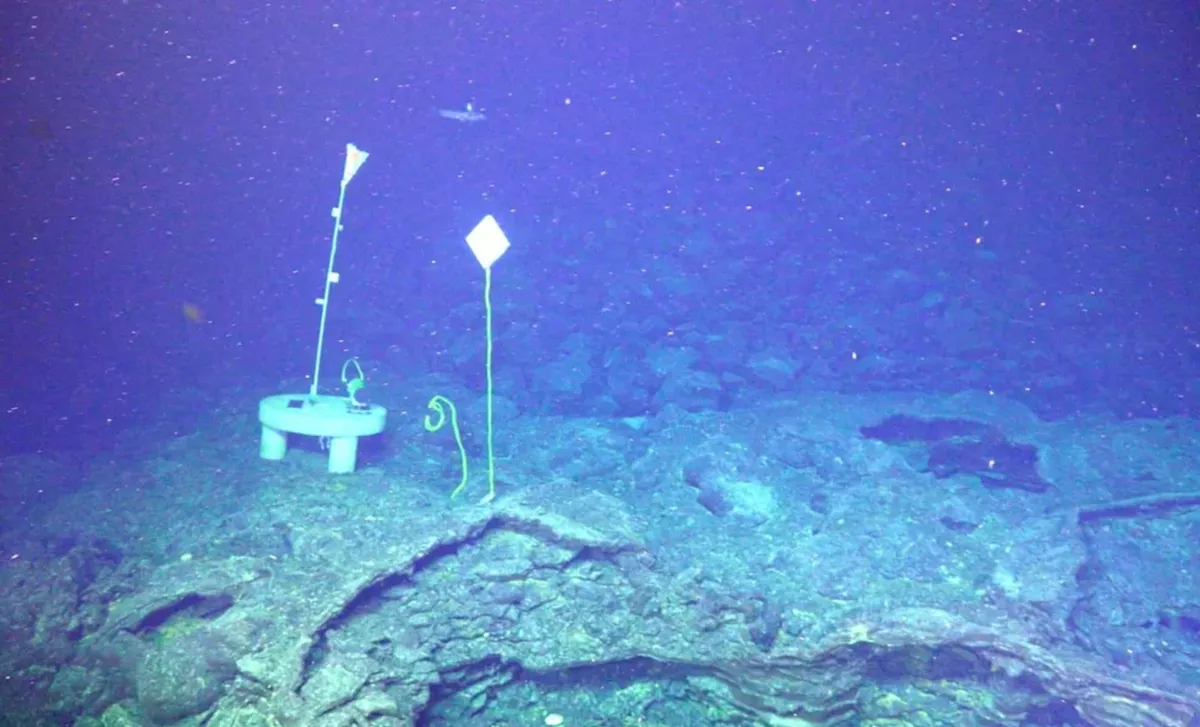
The Axial Seamount, recognized as the most active volcano in the Northeast Pacific, is currently exhibiting strong signs of preparing for another eruption. Recent seismic and geophysical studies, published in Nature Communications, indicate a notable increase in activity beneath its oceanic floor. Situated approximately 480 kilometers off the coast of Oregon and submerged under 1,400 meters of water, Axial has already erupted three times in the last three decades. This impending reawakening offers a rare opportunity for scientists to study how submarine volcanoes operate and their influence on both geological formations and ocean ecosystems.
Although Axial is the most active submarine volcano in its region, it remains largely unknown to the general public due to its concealment beneath the ocean surface. As volcanologist Bill Chadwick emphasized in an interview with Oregon Public Broadcasting, “Axial is the most active volcano in the Northeast Pacific, which maybe some people don’t know, because it’s hidden under the ocean.” This lack of visibility makes its activity less dramatic compared to terrestrial eruptions like Hawaii’s Kīlauea; however, its significance is undeniable. Scientists are meticulously monitoring its magma reservoirs, which have been steadily swelling since the last eruption in 2015. Signs such as seismic swarms, ground deformation, and changes in hydrothermal vents indicate magma movement deep beneath the surface, suggesting that another eruption may be imminent.
The Axial Seamount is not merely a geological curiosity; it serves as one of the best natural laboratories for studying submarine volcanic processes. Unlike their land-based counterparts, submarine eruptions are influenced by factors such as extreme pressure, rapid cooling, and dynamic interactions with seawater. These characteristics make each eruption at Axial an invaluable opportunity to understand how magma behaves beneath the ocean floor. Researchers point out that its location on the Juan de Fuca Ridge and its connection to a hot mantle plume contribute to its heightened activity. The volcano offers essential insights into how magma chambers inflate and how fissures propagate prior to eruptions. Historical eruption patterns observed in 1998, 2011, and 2015 have shown that activity tends to concentrate along the eastern wall of the caldera. Geophysicist Jidong Yang and his team have remarked, “The reason for the connection between the high-melt zone and the focusing of eruptive fissures near the eastern caldera wall in 1998, 2011, and 2015 remains unclear.”
Evidence collected through advanced seafloor sensors reveals unmistakable signs of inflation within Axial’s magma reservoir. Following the eruption in 2015, scientists observed a consistent uplift of the caldera floor attributed to the accumulation of magma. By 2024, this uplift had surpassed levels recorded prior to the last eruption, heightening expectations for another volcanic event. Additionally, microearthquakes, often indicative of magma movement through cracks, are becoming increasingly frequent. Changes in hydrothermal activity also suggest the presence of new heat sources below the surface. Unlike terrestrial eruptions, these underwater events are rarely destructive to human settlements; however, they play a critical role in shaping the seafloor and regulating hydrothermal ecosystems.
Understanding the Axial Seamount is crucial not only for geological research but also for comprehending broader ecological and geological processes. Its unique features provide insights into the dynamics of underwater volcanic activity and its effects on the surrounding marine environment. As scientists continue to monitor this fascinating volcano, the impending eruption offers a timely opportunity for research that may enhance our knowledge of volcanism and its far-reaching implications.